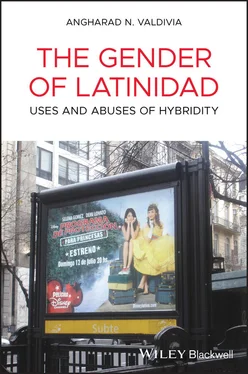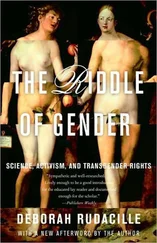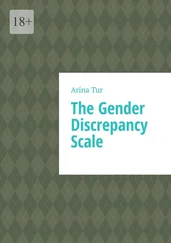While the flattening of difference, both within Latinidad and between ethnics, is readily apparent, so is the tacit acknowledgment that neither all Latina/os nor all ethnics are alike. Ambiguity and hybridity have been found by both the US Census, where large portions of the ethnic population feel frustrated by the discrete ethnic categories provided in census forms, and by major research projects such as the Pew Hispanic Center and Kaiser Family Foundation's report, National Survey of Latinos (2002, updated 2004), which documents that second‐ and later‐generation Latina/os overwhelmingly (62%) do not list any single national origin as their background but opt for an umbrella category such as Latina/o. Ambiguity within Latinidad is coupled by ambiguity between ethnicities, as the Pew Foundation finds that both Latina/os and Asian Americans marry across ethnicities in increasing proportions. This hybridity is present in media culture and is represented through internally contradictory approaches. So, for example, while Dávila (2001) notes that all ethnics – Latina/os, African Americans, Asian Americans, and Native Americans – are treated as the last bastion of purity, tradition, and family, in another essay (Dávila 2001) she points out that media industries are beginning to pursue a parallel path of selective differentiation between and within types of Latinidad, often built on stereotype and essentialist national characteristics. Thus, at the level of tradition, all ethnics may be the same, but Asian Americans are the “model minority.” Similarly, until quite recently – before the Elián González spectacle – Cuban Americans were treated as the model minority within Latina/os (Molina‐Guzmán 2005).
The concept of hybridity is extremely useful to communications scholars for a number of reasons, yet it remains to be fully utilized by our interdiscipline (Kraidy 1999, 2002; Murphy and Kraidy 2003). Kraidy (2002, p. 317) proposes that we foreground this concept, as it “needs to be understood as a communicative practice constitutive of, and constituted by, sociopolitical and economic arrangements” that are “complex, processual, and dynamic.” Beyond its merely descriptive uses, hybridity also opens up the space for the study of cultural negotiations, conflicts, and struggles against the backdrop of contemporary globalization (Shome and Hegde 2002a, b), wherein an increasing part of the global population is simultaneously becoming geographically displaced and endlessly commodified. This is precisely the framework of analysis around which this book coheres. Contemporary mainstream Latinidad will be explored against the backdrop of globalization, with an emphasis on cultural negotiations and displacements.
1 1 Elsewhere, many scholars have written about the history of Latina/o Studies and the previous academic formations that contributed and continue to coexist with this interdiscipline. The Gender of Latinidad begins within Latina/o Studies as a pan‐national and pan‐ethnic formation.
2 2 There is a long history and debate within US Latina/o Studies, and more so within Chicana/o Studies, about the mythical “bronze” race, which celebrated the indigenous elements of the Southwest Latina/o. Most powerfully articulated in the 1960s and '70s, this bronze race discourse was politically powerful and served to unify and valorize the presence and history of US Latina/os.
3 3 I put “voluntary” in quotes because it hides the many layers of involuntary migration due to famine, persecution, and economic dispossession. To be sure, there are fully voluntary migrants, but waves of migration usually follow push‐out forces that make it impossible for populations to remain in their homeland.
4 4 I realize “Latinx” is widely used instead of “Latina/o.” A complex conversation about terminology is beyond the scope of this book. I am still being educated about it. Whereas I am persuaded by Vidal‐Ortiz and Martínez’s (2018) call to challenge androcentric gendered hierarchies, I am also respectful of R. Rodriguez's (2017) questions about what is left out or eliminated by the “x.” Furthermore, as Trujillo‐Pagan (2018) convincingly argues, “Latinx” amounts to “genderblind sexism,” echoing Molina‐Guzmán's (2018) work on colorblind casting and providing yet another call for the agency to claim a gender, like the previously referenced Rodriguez (2017). Consequently, throughout the book I will use the term “Latina/o,” as I continue to explore the possibilities and challenges of “Latinx.”
5 5 This was evident in a global children's television project in which I participated. In terms of coding race, research teams across national boundaries found it impossible to concur as to what counted as “white” and what counted as “black,” let alone the many possibilities in between.
6 6 This might read offensive to some, but in Latin America, the term “Chino” is applied to all Asian‐descendant or even Asian‐looking people. This usage of the term has been imported to the United States, where many use “Chino Latino” to refer to Asian‐Latinos.
Конец ознакомительного фрагмента.
Текст предоставлен ООО «ЛитРес».
Прочитайте эту книгу целиком, на ЛитРес.
Безопасно оплатить книгу можно банковской картой Visa, MasterCard, Maestro, со счета мобильного телефона, с платежного терминала, в салоне МТС или Связной, через PayPal, WebMoney, Яндекс.Деньги, QIWI Кошелек, бонусными картами или другим удобным Вам способом.












